Related Research Articles
Jacques Heath Futrelle was an American journalist and mystery writer. He is best known for writing short detective stories featuring Professor Augustus S. F. X. Van Dusen, also known as "The Thinking Machine" for his use of logic. He died in the sinking of the RMS Titanic.

In Nacht und Eis, also called Der Untergang der Titanic and Shipwrecked in Icebergs in the US, is a 1912 German silent adventure-disaster drama film about the sinking of RMS Titanic. This is the second made, and the first surviving film about the Titanic disaster.
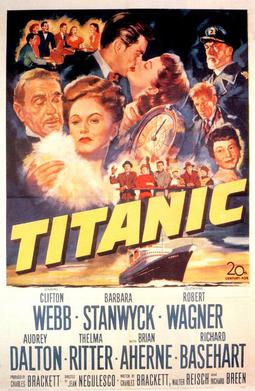
Titanic is a 1953 American drama film directed by Jean Negulesco, and starring Clifton Webb and Barbara Stanwyck. It centers on an estranged couple and other fictional passengers on the ill-fated maiden voyage of the RMS Titanic, which took place in April 1912.

Wallace Henry Hartley was an English violinist and bandleader on the Titanic during its maiden voyage. He became famous for leading the eight-member band as the ship sank on 15 April 1912. He and the rest of the band died.

"Nearer, My God, to Thee" is a 19th-century Christian hymn by Sarah Flower Adams, which retells the story of Jacob's dream. Genesis 28:11–12 can be translated as follows: "So he came to a certain place and stayed there all night because the sun had set. And he took one of the stones of that place and put it at his head, and he lay down in that place to sleep. Then he dreamed, and behold, a ladder was set up on the earth, and its top reached to heaven; and there the angels of God were ascending and descending on it..."
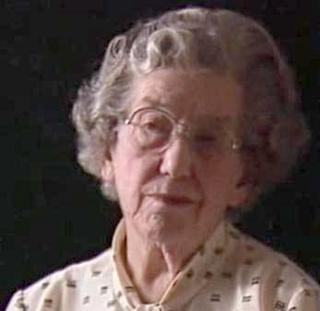
Eva Miriam Hart MBE was a British woman who was one of the last remaining survivors of the sinking of RMS Titanic on 15 April 1912. At the time of the sinking of the Titanic, she was 7 years old.

Atlantic (1929) is an all-talking sound British drama film directed and produced by Ewald André Dupont and starring Franklin Dyall and Madeleine Carroll. Originally, two versions were made: the English and German-language version Atlantik were shot simultaneously. Subsequently, the production of a French version (Atlantis) began in spring 1930 using different footage and partially an altered storyline with a different director. The fourth version was released as a silent film. The story was taken from the West End play The Berg by Ernest Raymond. It was one of the most expensive films of 1929.
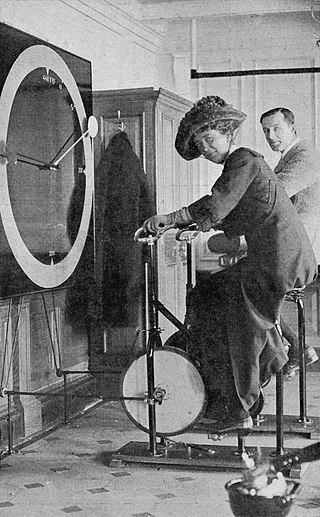
Lawrence Beesley was an English science teacher, journalist and author who was a survivor of the sinking of RMS Titanic.

RMS Titanic sank on 15 April 1912 in the North Atlantic Ocean. The largest ocean liner in service at the time, Titanic was four days into her maiden voyage from Southampton to New York City, with an estimated 2,224 people on board when she struck an iceberg at 23:40 on 14 April. Her sinking two hours and forty minutes later at 02:20 ship's time on 15 April, resulted in the deaths of more than 1,500 people, making it one of the deadliest peacetime maritime disasters in history.
A total of 2,240 people sailed on the maiden voyage of the Titanic, the second of the White Star Line's Olympic-class ocean liners, from Southampton, England, to New York City. Partway through the voyage, the ship struck an iceberg and sank in the early morning of 15 April 1912, resulting in the deaths of 1,517 passengers and crew.

The crew of the Titanic were among the estimated 2,240 people who sailed on the maiden voyage of the second of the White Star Line's Olympic-class ocean liners, from Southampton, England, to New York City in the United States. Halfway through the voyage, the ship struck an iceberg and sank in the early morning of 15 April 1912, resulting in the deaths of over 1,500 people, including approximately 688 crew members.

The Allison family was a Canadian family of first-class passengers on board the RMS Titanic, which struck an iceberg and sank on 15 April 1912.
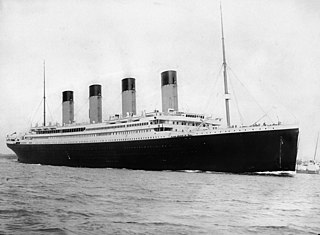
RMS Titanic was a British ocean liner that sank on 15 April 1912 as a result of striking an iceberg on her maiden voyage from Southampton, England to New York City, United States. Of the estimated 2,224 passengers and crew aboard, 1,496 died, making the incident the deadliest sinking of a single ship at the time. Titanic, operated by the White Star Line, carried some of the wealthiest people in the world, as well as hundreds of emigrants from the British Isles, Scandinavia, and elsewhere in Europe who were seeking a new life in the United States and Canada. The disaster drew public attention, spurred major changes in maritime safety regulations, and inspired a lasting legacy in popular culture.
Emily Maria Borie Ryerson was an American first-class passenger who survived the sinking of RMS Titanic on April 15, 1912.

There have been several legends and myths surrounding the RMS Titanic and its destruction after colliding with an iceberg in the Atlantic Ocean. These have ranged from stories involving the myth about the ship having been described as "unsinkable" to the myth concerning the final song played by the ship's musicians.

Lifeboats played a crucial role during the sinking of the Titanic on 14–15 April 1912. The ship had 20 lifeboats that, in total, could accommodate 1,178 people, a little over half of the 2,209 on board the night it sank.

There were many animals aboard the Titanic during her disastrous maiden voyage, which ended with the ship sinking on 15 April 1912 after colliding with an iceberg.
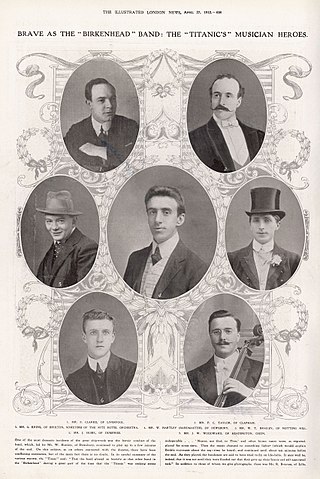
The musicians of the Titanic were a septet orchestra who performed chamber music in the first class section aboard the ship.

Marian Longstreth Thayer was an American socialite and survivor of the sinking of the RMS Titanic. She was the wife of John Borland Thayer II, a Director and Second Vice President of the Pennsylvania Railroad Company, and the mother of John Borland "Jack" Thayer III. In 1912, all three of them, along with their maid Margaret Fleming, were passengers on RMS Titanic maiden voyage when it struck an iceberg and sank. Marian, Jack III, and Fleming all survived, but John II died.

Reflecting the White Star Line's reputation for superior comfort and luxury, the Titanic had extensive facilities for First Class passengers which were widely regarded as the finest of her time. In contrast to her French and German competitors, whose interiors were extravagantly decorated and heavily adorned, the Titanic emphasized comfort and subdued elegance more in the style of a British country manor or luxury hotel. Titanic's enormous size enabled her to feature unusually large rooms, all equipped with the latest technologies for comfort, hygiene, and convenience. Staterooms and public spaces recreated historic styles with a painstaking attention to detail and accuracy. There was a wide range of recreational and sporting facilities in addition which provided ample opportunity for amusement during a voyage.
References
- 1 2 North Berks Herald - May 4, 1912, p7 col 1.
- ↑ R.L. Arrowsmith, Charterhouse Register: 1769-1872, Phillimore & Co. Ltd., London and Chichester, 1974
- ↑ "Father Thomas Byles, Titanic hero, and Rev Ernest Carter | Leamington History Group" . Retrieved 11 July 2023.
- 1 2 "The Titanic on film : myth versus truth | WorldCat.org". www.worldcat.org. Retrieved 11 July 2023.
- ↑ "Ernest Courtenay Carter | Titanic Pages - Titanic History Website". www.titanicpages.com. Retrieved 11 July 2023.
- 1 2 "The last night on the Titanic : unsinkable drinking, dining, and style | WorldCat.org". www.worldcat.org. Retrieved 11 July 2023.
- ↑ https://www.encyclopedia-titanica.org/titanic-victim/ernest-courtenay-carter.html
- ↑ The Carthusian Magazine, Vol. X, Nos.358-59, June–July 1912